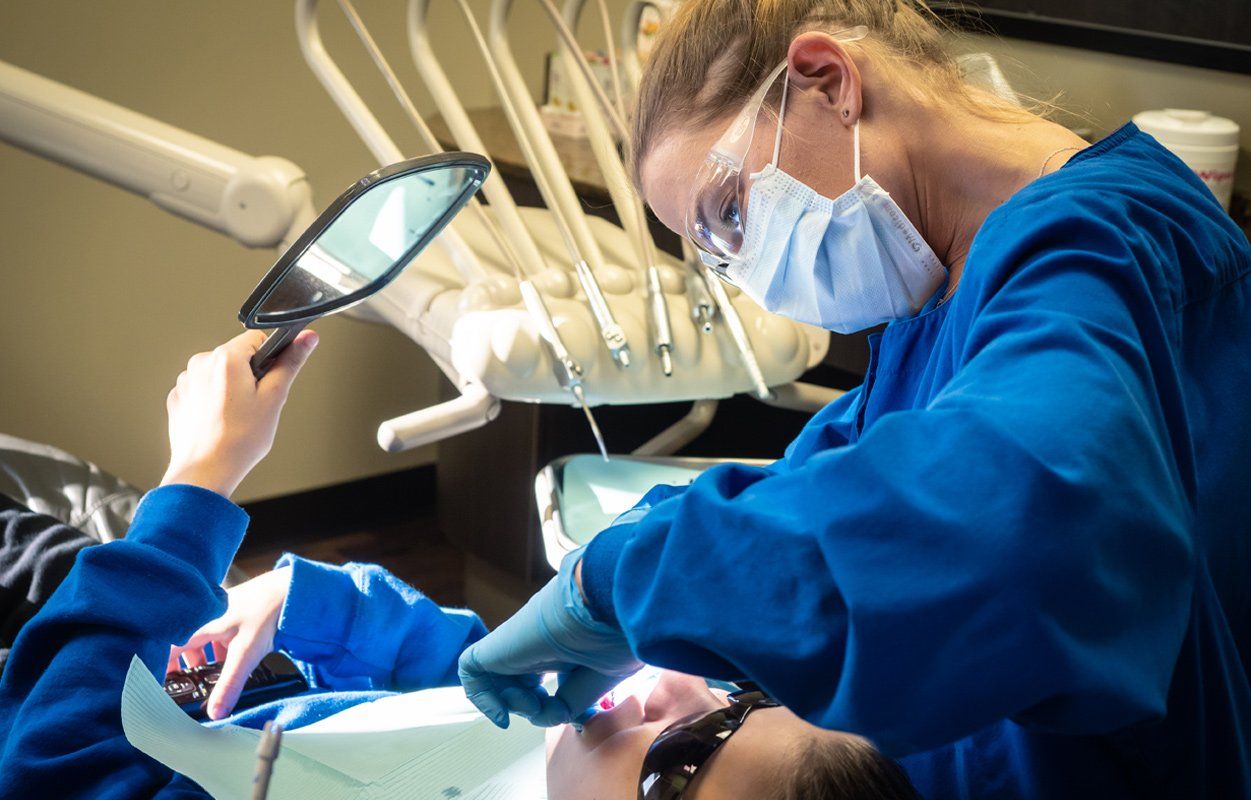Bonding

Bonding is a painless, low-maintenance, and reliable cosmetic treatment to fix the color, shape, and health of your teeth and restore your confidence with a beautiful smile.
Bonding is a simple yet reliable cosmetic dental procedure which is used for a variety of reasons. It can be used to improve the appearance of your teeth after decay, discoloration, or a chip. Bonding is also used when wanting to fill spaces between teeth or if you are wanting to achieve a particular look. Bonding may also be an appropriate procedure for protecting a part of your tooth that is exposed because of a receding gum. Bonding does not require you to make any prior preparations and is a painless procedure that usually does not require anesthesia, unless it is being used on a decayed tooth.
When bonding a tooth, we will first use a shape guide to identify the color of your natural tooth. That helps us determine which shade of composite resin to use. We then apply the composite resin, which bonds to your tooth. Then there are several steps we take to make sure that the tooth looks as natural as possible. We etch the newly bonded tooth to keep it from being too smooth. Then a conditioning liquid and resin are applied. The conditioning liquid helps the resin to adhere. We then go in and shape and smooth the resin according to the natural shape of your teeth. After that the resin is hardened. Finally, we polish the tooth until it looks completely natural.
Once the treatment is complete, the bonded tooth should not interfere with your bite or your comfort. You should be careful to avoid tea, red wine, cigarettes, and coffee in the first few days after the bonding treatment because they could stain your resin. You should also avoid chewing your fingernails, ice, or any hard material that may cause the resin to chip. You should continue to maintain high standards of oral hygiene and schedule regular dental appointments. If you experience discomfort or you have uneven edges on the bonded tooth, you should follow up with us as soon as possible .
Advantages of Bonding
Cost
The cost of the procedure is affordable. Your insurance plan is likely to cover most, if not all of it, especially if the reason for the procedure is to fill a cavity.
Durability
The bonding material will last up to ten years. As long as you keep your newly bonded tooth clean and undamaged, you will not need to make any replacements or touch-ups during this time.
Ease
It is a fairly simple procedure that takes only a few minutes and in most cases does not require anesthesia. The procedure typically does not involve a lot of enamel removal, and you generally only need one visit to the dentist's office. There is no need for any special care after the treatment. The only think you have to remember to do is follow healthy hygiene practices.
Painless
If you haven't scheduled your dentist appointment for bonding because you are afraid of pain, you have nothing to worry about. The procedure is painless and is generally only done under anesthesia if the dentist is doing something else in conjunction with your procedure.
Treating Tooth Discoloration
Traditional methods for whitening teeth may not work for everyone. For example, if you received an antibiotic treatment as a child, it might have affected the inner tissues of your teeth. Bonding may help you correct the problem. We can apply a layer of resin to the affected teeth, which will give your teeth a whiter, more natural look.
What Our Patients Say
Book an Appointment
We look forward to seeing you soon!






